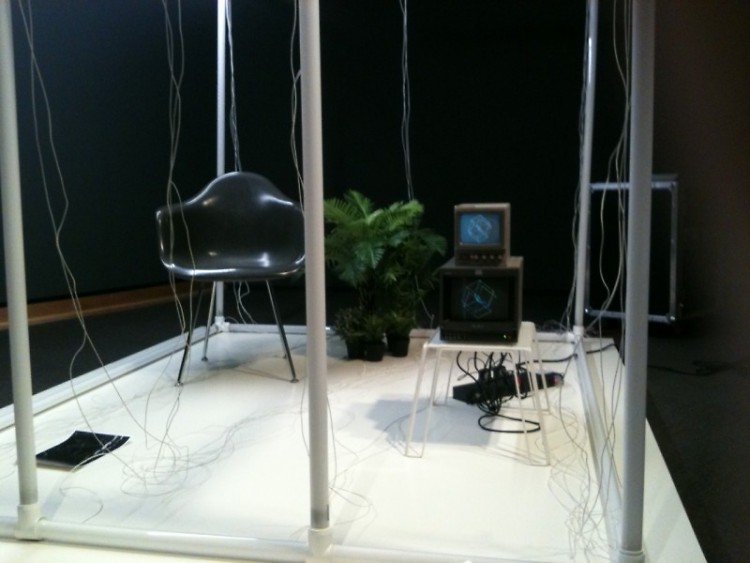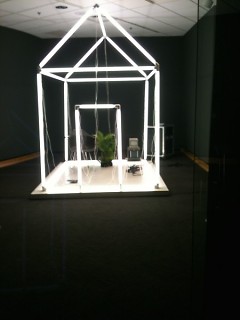Osman Khan’s sculpture, "House," a finalist on the Jurors' Shortlist, will be hosted at Frederik Meijer Gardens & Sculpture Park through January 4.
For this piece, Kahn has built a minimalist sculpture of a house constructed of fluorescent tubes connected by plastic fittings. In its stark simplicity, the structure of the house seems stable and solid until we remember that this is a house of glass.
The sculpture highlights the fragility of the American Dream of home ownership.
"The work emerged out of the mortgage crisis and the recession that followed, and also by my recent move to South Eastern Michigan, encountering the gap toothed and decimated neighborhoods of Detroit, all those failed structures that once were homes for families,” explains Kahn.
Kahn has deliberately exposed the mechanics of this house. We can clearly see wires, a power strip, an electric cord and an equipment case. The walls of the house are nonexistent, so we look through to see furnishings. A black plastic molded Eames chair suggests an ordinary living room in a middle class home. A group of potted plants in a corner adds a “homey” touch. Two computer screens display animated 4-dimensional (and therefore nonexistent) geometric figures. Loose bundles of white wires hang down from the peak of the sculpture and stretch languidly across the room’s floor.
“I was a bit captivated by the way the wires looked hanging, exposed and a bit unruly, a pleasing contrast to the strict linearity of the house structure," Khan says. "It reminded me a bit of a weeping willow, with its tinge of melancholy that I felt added to the piece.”
Khan has placed a photograph of black marble on the floor of the room, suggesting luxury and wealth. Khan also sees a connection to legend.
“I was also bearing in mind a legend that Shah Jahan, the Moghul emperor responsible for building the Taj Mahal as a tomb (a final home) for his departed wife was to build a similar structure for himself in black marble,” Khan says.
These furnishings are placed in the lower third of the sculpture, leaving an airy, quiet space floating above.
On one level, this sculpture is about houses and the memories they evoke. But it is also a reminder that there are important social and political issues at play here. For too many, the word house is associated only with loss and failure. Khan is reminding us that this failure of the American Dream is our shared responsibility.
The Rapidian, a program of the 501(c)3 nonprofit Community Media Center, relies on the community’s support to help cover the cost of training reporters and publishing content.
We need your help.
If each of our readers and content creators who values this community platform help support its creation and maintenance, The Rapidian can continue to educate and facilitate a conversation around issues for years to come.
Please support The Rapidian and make a contribution today.

